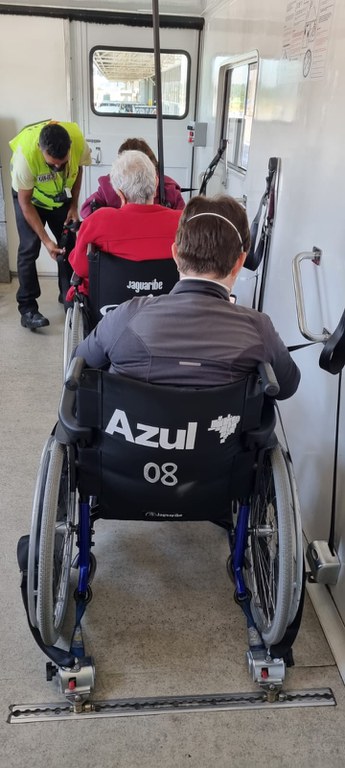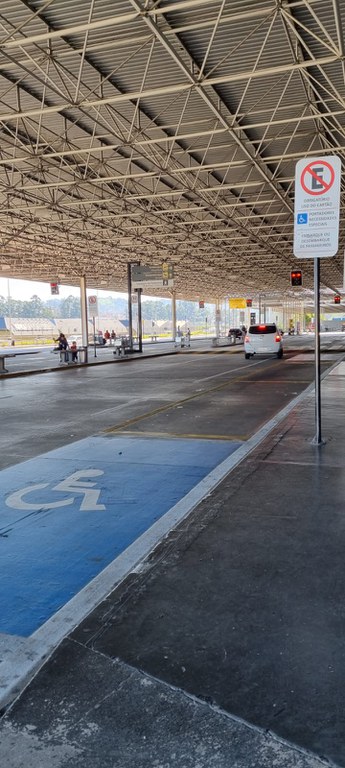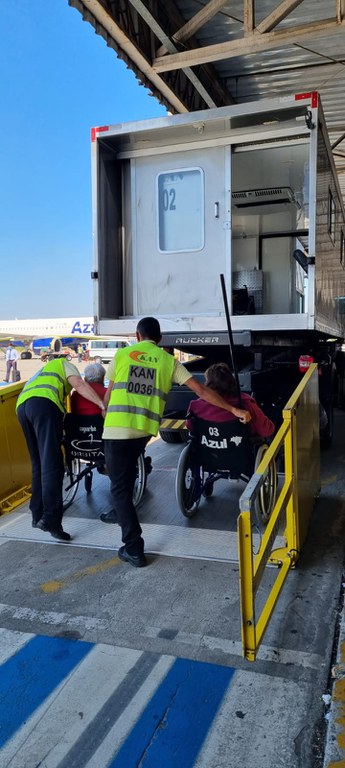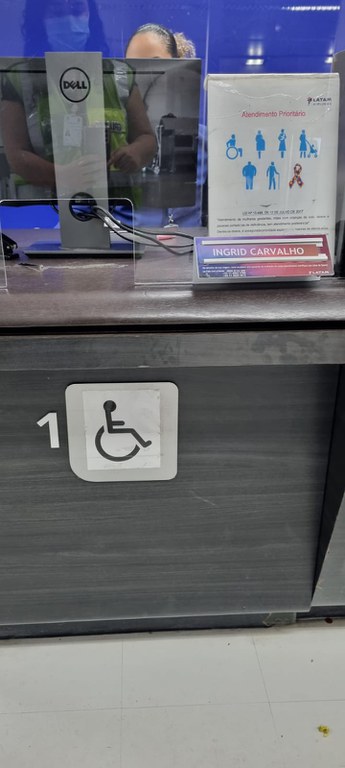Notícias
AIR SERVICES
ANAC and OACI discuss accessibility in the Brazilian airline industry
The National Civil Aviation Agency (ANAC) and the International Civil Aviation Organization (ICAO) met in the last week of April to discuss accessibility issues in the Brazilian airline industry. The discussions started on April 25th, in the auditorium of the Agency’s Headquarters, in Brasília (DF), and continued until April 29th.
The purpose of the meeting was motivated by an ICAO project that aims to learn about the best practices adopted by member states that are a reference in the matter, so that these best practices can help the organization to establish new requirements and recommended practices. Brazil is among the countries selected and is the first state to be visited in South America.
The meetings
At the opening of the agenda, ANAC’s head of Department of Air Services, Rafael Botelho, pointed out that the agenda is important to “increase the level of service quality and service delivery to the user.”
One of the ICAO representatives, Pablo Lampariello, who is an AVSEC/FAL regional officer, presented the internationally recommended accessibility standards and methods. “We look for efficiency. Efficiency is simple, but being efficient is different. With less resource, less time and better results. This is what we seek to share,” said Lampariello.
In the opportunity, Mrs. Maria Teresa Antunes, who works at the Facilitation and Security Department of the National Civil Aviation Authority, in Portugal, was also invited to share with Brazil the European Union’s experiences with accessibility.
During the week, there were presentations of the main Brazilian public policies for accessibility in air transportation, conducted by the Civil Aviation Secretariat, from the Ministry of Infrastructure, besides a presentation from the Ministry of Women, Family and Human Rights and from Gol Airlines, which developed an activity to raise the participants' awareness to the issue of visual impairment.
In the practical activities, held at Guarulhos Airport, the team from the concessionaire GRU Airport, which manages the airport, presented important data about the number of passengers with special needs and led all the participants to get to know the infrastructure of the place through the observation and experience of a passenger, from the moment of arrival at the airport, through check-in, security inspection channel, immigration, until their arrival at the boarding area. This way, it was possible to verify counters and adapted bathrooms, tactile floors, signaling for priorities, among several other resources aimed at ensuring the rights of passengers with some special needs.
In addition, conversations were held with the airlines in order to learn about the procedures adopted in providing assistance to passengers with special needs. The whole team accompanied boarding and disembarkation and checked the use of ambulift, equipment used to help wheelchair users get on and off the aircraft. In aircraft such as the ATR, where it is not possible to use the ambulift, the use of access ramps was verified.
As a conclusion of the practical tests, best practices applied to accessibility procedures were scored, in addition to good coordination between airport management and airlines in meeting these demands.
The good practices observed in Brazil will be shared with other states in an attempt to standardize accessibility measures in air transport.
ICAO Visit
Brazil was chosen by the ICAO as a reference country, due to the good norms and actions developed to help people with disabilities, the elderly and other people with some kind of special need when using air transport, especially due to the country’s experience in organizing major events, especially the Paralympics, held in Rio de Janeiro in 2016. ICAO has been working to learn about these regulations, infrastructure and actions adopted by the country, with regard to accessibility in civil aviation, in order to propose new standards and practices at the international level.
ANAC Communications Office





